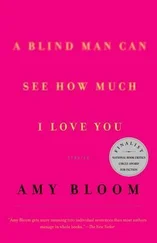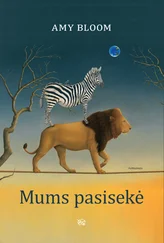After several centuries of confusion, preceded by some early centuries of clarity (at least for Greek gentlemen), we seem to have gotten the difference between gender and sexuality reasonably clear: men are not defined primarily as creatures who only desire women, and sexual desire for men is not the thing that makes a person female. But in our post-Freudian, even post-Lacanian sophistication, in which we wink at the spinsters’ “Boston marriage,” sure that it must have been a sexual relationship, however unacknowledged, and chuckle knowingly at the “man’s man,” aware that he is often just that, we seem baffled by the difference between sexuality and temperament, between one’s sexual nature and one’s personality. There is a whole history of fops and cowgirls, dandies with marcelled waves and tough, wisecracking broads, and where we once understood that one might be male, effeminate, and heterosexual (most of Spencer Tracy’s screen rivals for Katharine Hepburn come to mind), or female, masculine, and heterosexual (Rosalind Russell and Thelma Ritter), we seem to have now forgotten. The high-heeled, Chanel-clad lesbian and the football-playing, beer-swigging gay man perplex us, as if surely some norm is violated when a woman who doesn’t have sex with men likes lacy lingerie anyway, and a man who doesn’t sleep with women enjoys televised sports, cars, and sweatpants. In our collective cultural wish not to be out of it or old-fashioned, we’ve chosen to be simpleminded. We pretend that sexual orientation and personal style are one and the same and that those who suggest otherwise are trying to make fools of us or hide their shameful preference. Presented with Nature’s bouquet of possibilities, a wild assortment of gender and erotic preference and a vast array of personalities, we throw it to the ground.
No one knows why the loss of the mother early in life leads some men to have extramarital affairs and others to crossdress. No one knows whether transsexuality is a biological result or a mix of the biological, the psychological, and the cultural. (To me, these things seem difficult to unravel — as we are all born into a culture of one kind or another, I’m never quite clear how we strain culture out of our assessments.) No one knows how well most transsexual people do ten or fifteen years after surgery, and no one knows how many transgendered people live happily, and syntonically, at ease with their gender and their sexuality, without ever going near a surgeon, an endocrinologist, or a psychiatrist.
The men and women who devote themselves to these and other questions, to the ins and outs of our private selves, our visions of self, our presentations of self, our hidden histories and baffling communiqués, are psychiatrists, psychologists, sexologists, and academics; they are joined on the field by political activists, surgeons, endocrinologists, entrepreneurs, and lawyers. I am indebted to all of these people, and I, like they, have been taught by the thousands of men and women who live their lives, tranquilly or in distress, with confidence or with trepidation, as cactus and platypus, bearded lady and girlyboy, and push all the rest of us to see that Nature contains multitudes. Although she makes mistakes, these black tulips, these examples of Nature’s range, human creativity, and gender’s mutability, are not necessarily among them.
Allen, Mariette Pathy.
Transformations: Crossdressers and Those Who Love Them
New York: E. P. Dutton, 1989.
Angier, Natalie. “New Debate Over Surgery on Genitals.”
New York Times
, 13 May 1997.
Bayer, Ronald.
Homosexuality and American Psychiatry: The Politics of Diagnosis
Princeton: Princeton University Press, 1987.
Blackless, Melanie, Anthony Charuvastra, Amanda Derryck, Anne Fausto-Sterling, Karl Lauzanne, and Ellen Lee. “How Sexually Dimorphic Are We? Review and Synthesis.”
American Journal of Human Biology
12, no. 2 (2000): 151–66.
Bornstein, Kate.
Gender Outlaw: Men, Women, and the Rest of Us
New York: Routledge, 1993.
Braren, Victor, John J. Warner, Ian M. Burr, Alfred Slonim, James A. O’Neill, Jr., and Robert K. Rhamy. “True Hermaphroditism: A Rational Approach to Diagnosis and Treatment.”
Urology
15 (June 1980): 569–74.
Bullough, Vernon.
Sexual Variance in Society and History
New York: John Wiley and Sons, 1976.
Chase, Cheryl. “Affronting Reason.” In
Looking Queer: Body Image and Identity in Lesbian, Bisexual, Gay and Transgender Communities
, edited by D. Atkins. Binghamton, N.Y.: Harrington Park Press, 1998.
Chase, Cheryl. “ ‘Corrective Surgery’ Unnecessary: Reply to ‘Is It a Boy or a Girl?’ ”
Johns Hopkins Magazine
46, no. 1 (February 1994): 6–7.
Colapinto, John.
As Nature Made Him: The Boy Who Was Raised as a Girl
New York: HarperCollins, 2000.
DeJong, Tom P.V.M., and Thomas M. L. Boemers. “Neonatal Management of Female Intersex by Clitorovaginoplasty.”
The Journal of Urology
154 (August 1995): 830–32.
Devor, Holly. “Female Gender Dysphoria in Context: Social Problems or Personal Problems.”
Annual Review of Sex Research
7 (1996): 44–89.
Devor, Holly.
FTM: Female to Male Transsexuals in Society
Bloomington: Indiana University Press, 1997.
Devor, Holly.
Gender Blending: Confronting the Limits of Duality
Bloomington: Indiana University Press, 1989.
Diamond, Milton. “Sexual Identity, Monozygotic Twins Reared in Discordant Sex Roles and BBC Follow-up.”
Archives of Sexual Behavior
11, no. 2 (1982): 181–86.
Dreger, Alice Domurat. “ ‘Ambiguous Sex’ or Ambivalent Medicine?”
The Hastings Center Report
28, no. 3 (May/June 1998): 24–35.
Dreger, Alice Domurat.
Hermaphrodites and the Medical Invention of Sex
Cambridge, Mass.: Harvard University Press, 1998.
Dreger, Alice Domurat.
Intersex in the Age of Ethics
Hagerstown, Md.: University Publishing Group, 1999.
Fausto-Sterling, Anne. “The Five Sexes: Why Male and Female Are Not Enough.”
The Sciences
(March/April 1993): 20–24.
Fausto-Sterling, Anne.
Sexing the Body: Gender Politics and the Construction of Sexuality
New York: Basic Books, 2000.
Garber, Marjorie.
Vested Interests: Cross-dressing and Cultural Anxiety
New York: Routledge, 1997.
Glassberg, Kenneth I. “Gender Assignment in Newborn Male Pseudo Hermaphrodites.”
Urologic Clinics of North America
7 (June 1980): 409–21.
Green, James. “Getting Real About FTM Surgery.”
Chrysalis: The Journal of Transgressive Gender Identities
2, no. 2: 27–32.
Halberstam, Judith.
Female Masculinity
Durham, N.C.: Duke University Press, 1998.
Hermaphrodites with Attitude/ISNA News
Newsletter of the Intersex Society of North America. Petaluma, Calif.: 1994–.
Kessler, Suzanne.
Lessons from the Intersexed
New Brunswick, N.J.: Rutgers University Press, 1998.
Mazur, Tom. “Ambiguous Genitalia: Detection and Counseling.”
Pediatric Nursing
9 (November/December 1983): 417–31.
Miller, Rachel.
The Bliss of Becoming One! Integrating “Feminine” Feelings into the Male Psyche, Mainstreaming the Gender Community
Highland City, Fla.: Rainbow Books, 1996.
Money, John. “Psychologic Consideration of Sex Assignment in Intersexuality.”
Читать дальше












